¿Es seguro usar 15 voltios para una batería de 12 voltios?
Al trabajar con cualquier sistema eléctrico, especialmente aquellos que utilizan baterías , la seguridad y la eficiencia son fundamentales. Una pregunta frecuente es: ¿Es seguro usar 15 voltios para una batería de 12 voltios? Puede parecer una diferencia pequeña, pero al trabajar con sistemas eléctricos, cada voltio cuenta. Comprender esta diferencia de voltaje puede ayudarle a prolongar la vida útil de la batería, mantener un rendimiento óptimo y evitar accidentes costosos o peligrosos.
- Comprensión de los conceptos básicos de una batería de 12 voltios
- Cómo funciona la carga de una batería
- ¿Son seguros 15 voltios para una batería de 12 voltios? Analicémoslo .
- Efectos de sobrecargar una batería a 15 voltios
- Tolerancias del sistema de carga de la batería
- Señales de que su batería está sobrecargada
- Cómo evitar la sobrecarga de una batería
- Consejos de seguridad para la carga de la batería
- ¿Puede una batería recuperarse de una sobrecarga a 15 voltios?
- ¿Cuándo son realmente aceptables 15 voltios?
- Los mejores ajustes de voltaje para baterías de 12 voltios
- Cómo elegir el cargador adecuado para su batería
- ¿Son 15 voltios seguros para una batería de 12 voltios?
Comprensión de los conceptos básicos de una batería de 12 voltios
¿Qué es una batería de 12 voltios?
Una batería de 12 voltios es una fuente de energía estándar presente en innumerables aplicaciones, desde automóviles y embarcaciones hasta sistemas solares y sistemas de almacenamiento de energía de respaldo. Generalmente, está compuesta por seis celdas individuales de 2,1 V conectadas en serie, que proporcionan un voltaje nominal total de 12,6 V cuando está completamente cargada.
Tipos de baterías de 12 voltios
Existen varios tipos de baterías de 12 V, entre ellos:
Plomo-ácido (inundadas, AGM, gel)
Iones de litio (siendo LiFePO4 el más común)
Baterías a base de níquel
Cada tipo tiene diferentes características de carga y tolerancias a la sobretensión, lo cual es clave a la hora de evaluar si 15 voltios son seguros.
>>Ver también ¿Cómo entender el ciclo de vida de una célula Lifepo4?
Cómo funciona la carga de una batería
El concepto de voltaje de carga
El voltaje de carga se refiere al voltaje aplicado a una batería para restaurar su carga. El rango ideal de voltaje de carga depende del tipo y estado de la batería . Si se excede este rango, podría provocar sobrecalentamiento, formación de gases y, en última instancia, una menor vida útil de la batería.
Voltajes de carga típicos para baterías de 12 V
A continuación se presentan pautas generales para diferentes tipos de baterías:
Baterías de plomo-ácido: 13,8 V–14,7 V
Baterías AGM: 14,4 V–14,6 V
Baterías de gel: 13,8 V–14,1 V
Baterías de iones de litio (LiFePO4): 14,2 V–14,6 V
15 voltios exceden estos límites en muchos casos, por lo que es importante analizar atentamente los riesgos y las excepciones.
¿Son seguros 15 voltios para una batería de 12 voltios? Analicémoslo.
Baterías de plomo-ácido
En muchos sistemas de baterías de plomo-ácido, una breve exposición a 15 voltios puede no causar daños inmediatos, especialmente durante la carga de ecualización. Sin embargo, la carga continua a 15 V puede provocar una formación excesiva de gases, pérdida de agua y, eventualmente, la sulfatación de las placas o el abombamiento de la batería.
Baterías AGM y de gel
Las baterías AGM y de gel son más sensibles a la sobrecarga. Cargarlas a 15 V puede reducir significativamente su vida útil y provocar una fuga térmica o de los materiales electrolíticos.
Baterías de litio
En el caso de las baterías LiFePO4, 15 V generalmente está fuera del rango recomendado por el fabricante. Superar los 14,6 V puede provocar que el sistema de gestión de la batería (BMS) detenga la carga para proteger las celdas. La exposición prolongada a 15 V puede dañar los circuitos internos o causar un desequilibrio en las celdas.
Efectos de sobrecargar una batería a 15 voltios
1. Vida útil reducida de la batería
Sobrecargar una batería a 15 voltios acelera su degradación. Las reacciones químicas en su interior se vuelven inestables, lo que acelera la descomposición de los materiales activos.
2. Riesgo de descontrol térmico
Las baterías, en particular las de iones de litio, son sensibles a las altas temperaturas. Cargarlas a 15 V eleva la temperatura interna, lo que aumenta el riesgo de fuga térmica, una condición peligrosa que puede provocar un incendio o una explosión.
3. Gasificación y pérdida de agua en baterías de plomo-ácido
A 15 voltios, las baterías de plomo-ácido comienzan a liberar hidrógeno y oxígeno mediante electrólisis. Esto no solo desperdicia energía, sino que también supone un riesgo de explosión en zonas sin ventilación.
4. Activación del BMS en baterías de litio
En el caso de las baterías de iones de litio, superar los 14,6 V puede provocar que el BMS desconecte la batería. Si bien esto protege la batería, la activación frecuente del BMS puede reducir la fiabilidad y el rendimiento del sistema.
Tolerancias del sistema de carga de la batería
Salida del alternador en vehículos
La mayoría de los alternadores de vehículos cargan baterías de 12 V a aproximadamente 13,8 V–14,4 V. Durante arranques en frío o con reguladores defectuosos, algunos alternadores pueden alcanzar picos de tensión de 15 V, lo que generalmente indica un mal funcionamiento o una condición extrema.
Controladores de carga solar
Los controladores de carga solar, especialmente los modelos MPPT, se encargan de regular la entrada solar. Muchos controladores modernos permiten configurar parámetros de carga exactos según el tipo de batería , y el diseño suele impedir que se superen los 15 V.
Señales de que su batería está sobrecargada
Síntomas a tener en cuenta
Estuche hinchado o abultado
Calor excesivo durante la carga
Olores inusuales (como huevos podridos en baterías de plomo-ácido)
Disminución del tiempo de ejecución o del rendimiento
Cortes frecuentes del BMS (para baterías de litio)
Cómo evitar la sobrecarga de una batería
Utilice un cargador inteligente
Los cargadores inteligentes ajustan automáticamente el voltaje según el estado de carga de la batería. Suelen incluir funciones de seguridad para evitar la sobrecarga.
Verifique la configuración de su sistema
Asegúrese de que los controladores solares, alternadores o inversores estén correctamente configurados. Muchos sistemas permiten configurar los voltajes de carga inicial, de flotación y de absorción. Para una batería de 12 V, estos valores no deben superar los 14,6 V en la mayoría de los casos.
Monitor con sistema de gestión de batería
Las baterías de litio incorporan un sistema BMS que las protege activamente contra sobrecargas. Para otros tipos de baterías, los monitores de batería externos pueden avisarle si el voltaje sube demasiado.
Consejos de seguridad para la carga de la batería
Cargar en un área ventilada
Especialmente en el caso de las baterías de plomo-ácido, asegúrese de que haya una ventilación adecuada para dispersar los gases y evitar la acumulación de explosiones.
Utilice las pautas del fabricante
Consulte siempre la ficha técnica o el manual del usuario de la batería . Los parámetros de carga varían considerablemente según la marca y la composición química.
Mantenimiento regular
Revise los terminales para detectar corrosión, inspeccione los niveles de agua en las baterías inundadas y pruebe el voltaje con un multímetro regularmente.
¿Puede una batería recuperarse de una sobrecarga a 15 voltios?
Recuperación de baterías de plomo-ácido
Una batería de plomo-ácido ligeramente sobrecargada puede recuperarse con unos pocos ciclos de carga y descarga adecuados. Sin embargo, daños importantes como la deformación de las placas o la pérdida de agua son irreversibles.
Recuperación de baterías de litio
Si el BMS se activa antes de que se produzcan daños, la batería suele recuperarse. Sin embargo, si el voltaje de la celda supera los límites de seguridad, es posible que se pierda capacidad o se produzcan daños permanentes.
¿Cuándo son realmente aceptables 15 voltios?
Carga de ecualización
Algunas baterías de plomo-ácido inundadas de ciclo profundo requieren una ecualización periódica a más de 15 voltios para equilibrar las celdas y eliminar la sulfatación. Esto debe hacerse con cuidado y solo cuando lo especifique el fabricante.
Compensación de temperatura fría
En climas fríos, algunos sistemas de carga añaden voltaje para superar la resistencia. Por ejemplo, una compensación de 0,03 V por °C puede generar voltajes cercanos a 15 V a temperaturas muy bajas. Nuevamente, esto debe controlarse automáticamente, no manualmente.
Los mejores ajustes de voltaje para baterías de 12 voltios
|
Tipo de batería |
Voltaje de carga recomendado |
Voltaje máximo seguro |
|
Plomo-ácido inundado |
14,4 V–14,7 V |
15,0 V (solo para ecualización) |
|
Asamblea General Anual |
14,4 V–14,6 V |
14,8 V |
|
Gel |
13,8 V–14,1 V |
14,2 V |
|
LiFePO4 |
14,2 V–14,6 V |
14,6 V (15 V = riesgo) |
>>Ver también ¿Cuándo cambió EZGO a un sistema de 48 voltios?
Cómo elegir el cargador adecuado para su batería
Al seleccionar un cargador, tenga en cuenta la composición química de la batería, su capacidad (Ah) y su uso. Busque cargadores con:
Voltaje ajustable
Apagado automático
Modo flotación/mantenimiento
Sensores de temperatura (para carga en climas fríos)
El uso del cargador correcto garantiza que su batería se mantenga saludable y funcione de manera óptima.
¿Son 15 voltios seguros para una batería de 12 voltios?
La respuesta corta suele ser no. Para la mayoría de las baterías de 12 voltios, 15 voltios es demasiado alto y puede provocar sobrecarga, sobrecalentamiento y posible fallo. Hay excepciones limitadas, como la carga de ecualización para baterías de plomo-ácido inundadas, pero incluso en ese caso, 15 V deben usarse con precaución y bajo estricta supervisión.
Comprender el tipo de batería, sus especificaciones de carga y utilizar el equipo adecuado son pasos cruciales para una gestión segura y duradera del sistema de energía.
Si trabaja con una batería de 12 voltios, recuerde esta regla de oro: en caso de duda, manténgase por debajo de 14,6 voltios. Aumentar la tensión a 15 voltios podría ofrecer una carga ligeramente más rápida, pero las consecuencias a largo plazo pueden ser mucho más costosas que los pocos minutos ahorrados.
Ya sea que esté administrando una instalación solar, un sistema de RV o un banco de energía fuera de la red, la carga segura comienza con conocer su batería y respetar sus límites.





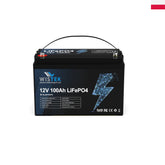

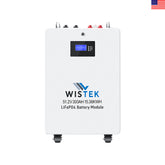
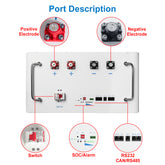
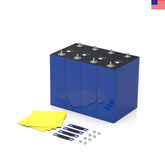



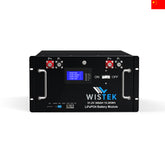
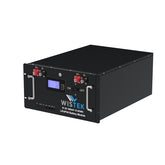









Leave a comment
All blog comments are checked prior to publishing